Yingting Wu
Ring-lite: Scalable Reasoning via C3PO-Stabilized Reinforcement Learning for LLMs
Jun 18, 2025Abstract:We present Ring-lite, a Mixture-of-Experts (MoE)-based large language model optimized via reinforcement learning (RL) to achieve efficient and robust reasoning capabilities. Built upon the publicly available Ling-lite model, a 16.8 billion parameter model with 2.75 billion activated parameters, our approach matches the performance of state-of-the-art (SOTA) small-scale reasoning models on challenging benchmarks (e.g., AIME, LiveCodeBench, GPQA-Diamond) while activating only one-third of the parameters required by comparable models. To accomplish this, we introduce a joint training pipeline integrating distillation with RL, revealing undocumented challenges in MoE RL training. First, we identify optimization instability during RL training, and we propose Constrained Contextual Computation Policy Optimization(C3PO), a novel approach that enhances training stability and improves computational throughput via algorithm-system co-design methodology. Second, we empirically demonstrate that selecting distillation checkpoints based on entropy loss for RL training, rather than validation metrics, yields superior performance-efficiency trade-offs in subsequent RL training. Finally, we develop a two-stage training paradigm to harmonize multi-domain data integration, addressing domain conflicts that arise in training with mixed dataset. We will release the model, dataset, and code.
Holistic Capability Preservation: Towards Compact Yet Comprehensive Reasoning Models
Apr 09, 2025Abstract:This technical report presents Ring-Lite-Distill, a lightweight reasoning model derived from our open-source Mixture-of-Experts (MoE) Large Language Models (LLMs) Ling-Lite. This study demonstrates that through meticulous high-quality data curation and ingenious training paradigms, the compact MoE model Ling-Lite can be further trained to achieve exceptional reasoning capabilities, while maintaining its parameter-efficient architecture with only 2.75 billion activated parameters, establishing an efficient lightweight reasoning architecture. In particular, in constructing this model, we have not merely focused on enhancing advanced reasoning capabilities, exemplified by high-difficulty mathematical problem solving, but rather aimed to develop a reasoning model with more comprehensive competency coverage. Our approach ensures coverage across reasoning tasks of varying difficulty levels while preserving generic capabilities, such as instruction following, tool use, and knowledge retention. We show that, Ring-Lite-Distill's reasoning ability reaches a level comparable to DeepSeek-R1-Distill-Qwen-7B, while its general capabilities significantly surpass those of DeepSeek-R1-Distill-Qwen-7B. The models are accessible at https://huggingface.co/inclusionAI
Dual Skew Divergence Loss for Neural Machine Translation
Aug 22, 2019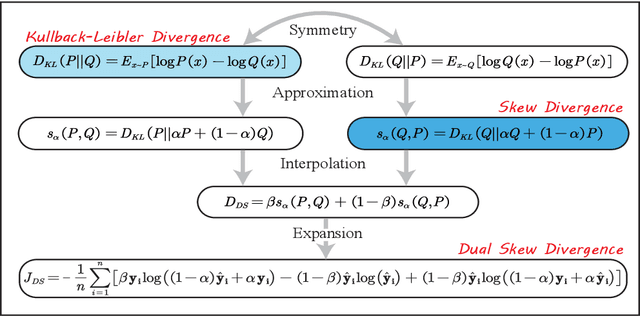

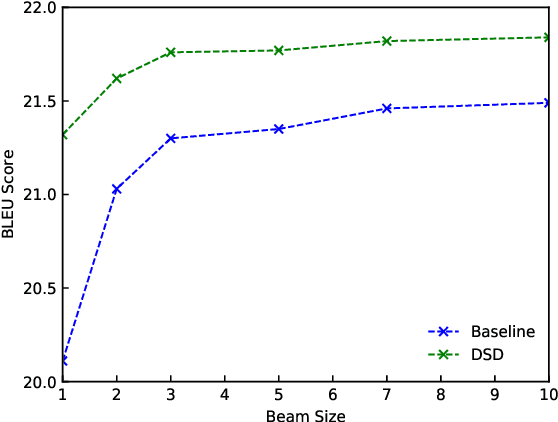
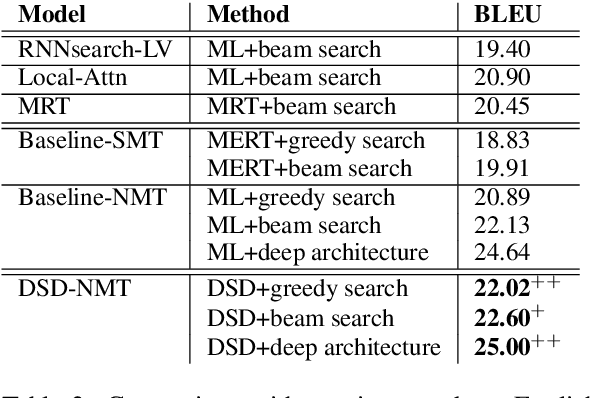
Abstract:For neural sequence model training, maximum likelihood (ML) has been commonly adopted to optimize model parameters with respect to the corresponding objective. However, in the case of sequence prediction tasks like neural machine translation (NMT), training with the ML-based cross entropy loss would often lead to models that overgeneralize and plunge into local optima. In this paper, we propose an extended loss function called dual skew divergence (DSD), which aims to give a better tradeoff between generalization ability and error avoidance during NMT training. Our empirical study indicates that switching to DSD loss after the convergence of ML training helps the model skip the local optimum and stimulates a stable performance improvement. The evaluations on WMT 2014 English-German and English-French translation tasks demonstrate that the proposed loss indeed helps bring about better translation performance than several baselines.
Finding Better Subword Segmentation for Neural Machine Translation
Jul 25, 2018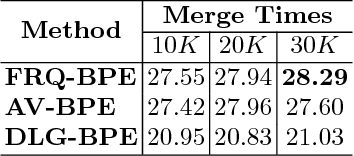
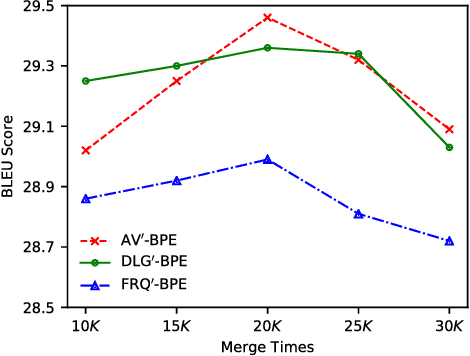
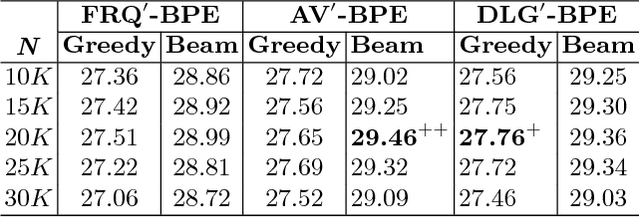
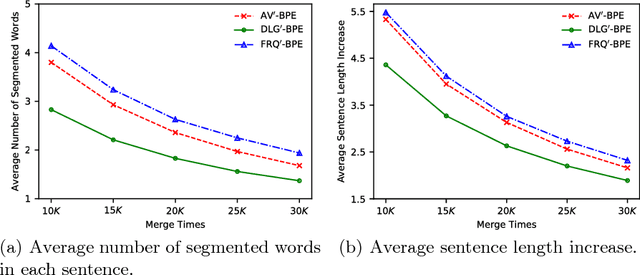
Abstract:For different language pairs, word-level neural machine translation (NMT) models with a fixed-size vocabulary suffer from the same problem of representing out-of-vocabulary (OOV) words. The common practice usually replaces all these rare or unknown words with a <UNK> token, which limits the translation performance to some extent. Most of recent work handled such a problem by splitting words into characters or other specially extracted subword units to enable open-vocabulary translation. Byte pair encoding (BPE) is one of the successful attempts that has been shown extremely competitive by providing effective subword segmentation for NMT systems. In this paper, we extend the BPE style segmentation to a general unsupervised framework with three statistical measures: frequency (FRQ), accessor variety (AV) and description length gain (DLG). We test our approach on two translation tasks: German to English and Chinese to English. The experimental results show that AV and DLG enhanced systems outperform the FRQ baseline in the frequency weighted schemes at different significant levels.
 Add to Chrome
Add to Chrome Add to Firefox
Add to Firefox Add to Edge
Add to Edge